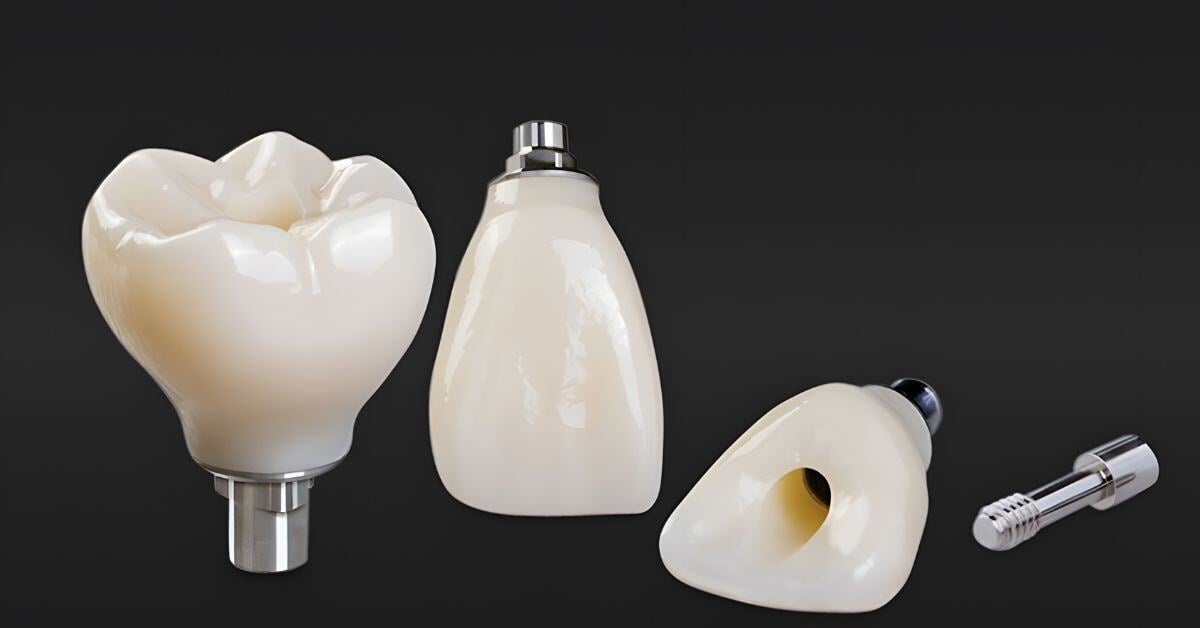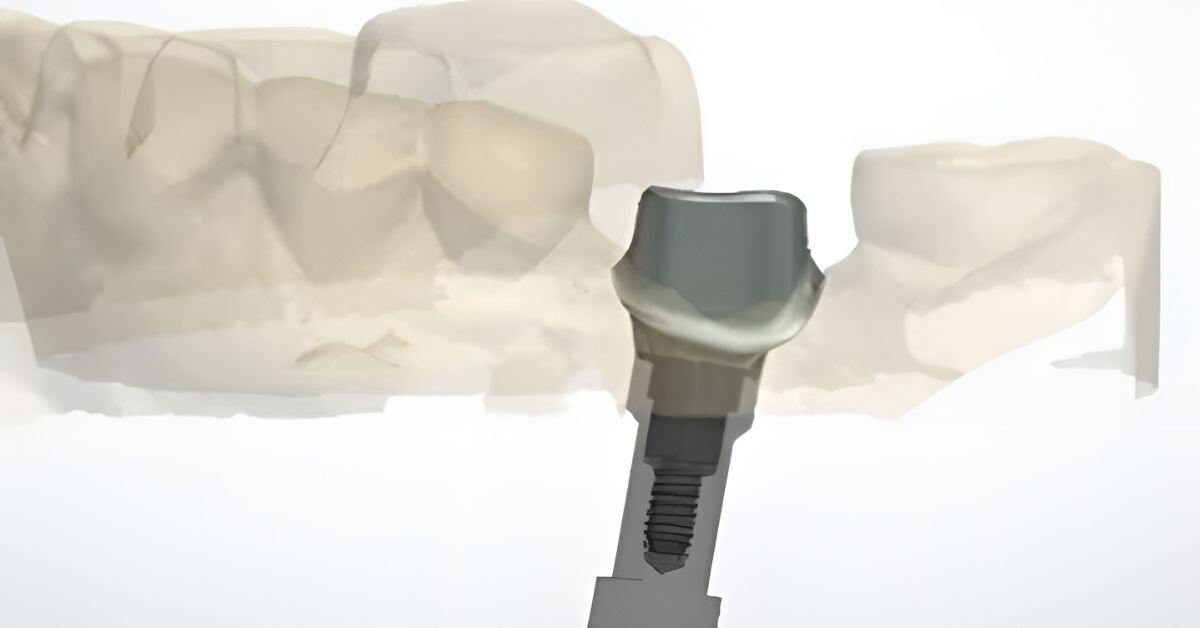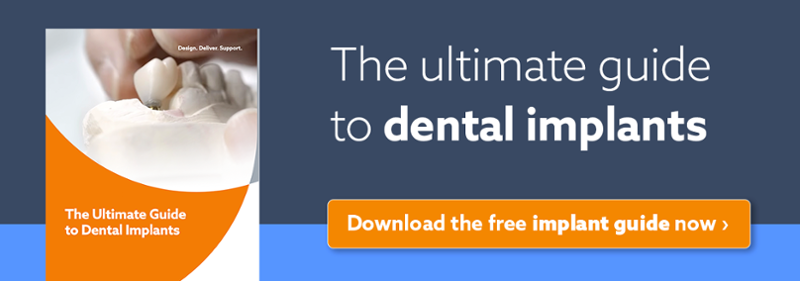Dental implants are a cornerstone of restorative dentistry and provide patients with a durable and highly functional solution for missing teeth. However, the success of a dental implant doesn’t just depend on the implant itself but also on the selection of the appropriate crown. The placement of the implant within the mouth is a significant influence on which type of crown is best for the patient and how to attach it.
In our guide below for dentists and dental patients, we’ll take a comprehensive look at the best crown based on dental implant location. We’ll discuss how implant location affects crown selection, crown material options, and more.
How Implant Location Impacts Crown Selection
Multiple areas within the mouth are fit for dental implant insertion. Each location can determine the best crown for the patient, with the primary influences for implant position being functionality and aesthetics. Below, we’ll discuss anterior (front teeth) and posterior (back teeth) implants.
Anterior (Front Teeth) Implants
If aesthetics is the priority for the patient, then it’s typical to place the dental implants in the visible front part of the mouth. Durability isn’t as much of a priority for anterior teeth since they’re not subjected to intense pressure during chewing. Front teeth are the focal point for creating a natural and confident smile, as they are one of the first features people notice. This makes materials like porcelain or zirconia top choices for implants.
Porcelain offers excellent translucency and closely mimics the natural enamel of teeth. Similarly, zirconia is becoming more popular in anterior restorations due to its durability and lifelike appearance. Though slightly less translucent than porcelain, it offers an excellent balance of strength and beauty.
Posterior (Back Teeth) Implants
When it comes to back teeth, strength and functionality take precedence. These teeth bear the brunt of chewing forces, requiring crowns that can withstand intense pressure over long periods. Materials like zirconia or metal alloys (e.g., gold or stainless steel) are ideal for posterior crowns. Zirconia’s durability makes it a standout choice for molars, as its resistance to fracture and wear can handle the heavy stresses of grinding and chewing.
Alternatively, metal crowns, while not as aesthetically pleasing, are premium options for longevity and resilience. They require less reduction of the original tooth during placement, which preserves natural structures. While these may not match the natural color of teeth, they remain hidden in the back of the mouth, where aesthetics are less of a concern.

Exploring Crown Material Options
Now that we’ve looked at dental implant locations, we can also consider the best crown material for the mouth. Choosing crown materials can feel overwhelming, given the range of options. Each material comes with distinct properties and benefits that support the different needs of the patient.
1. Porcelain
Porcelain crowns are the benchmark for achieving a natural aesthetic, especially for front teeth. Known for their luminousness, porcelain crowns mimic natural enamel, making them ideal for highly visible areas.
The advantages of porcelain crowns include their stunning visual appeal, customizable shading options, and excellent resistance to staining. However, they are less durable than zirconia or metal, so they’re typically reserved for low-impact areas like the front teeth.
2. Zirconia
Zirconia is becoming more popular among dentists and dental patients for its impressive versatility. It's known for its superior strength, fracture resistance, and wear durability, making it a standout choice for both anterior and posterior teeth. Zirconia’s main advantage lies in the balance it provides between aesthetics and longevity.
While it may not achieve the same level of translucency as porcelain, it presents a highly natural appearance and can last considerably longer under heavy usage. For the best of both worlds when it comes to crowns, many dental professionals recommend zirconia.
3. Metal
Most metal crowns feature gold or stainless steel alloys and offer impressive strength while preserving the integrity of opposing teeth. Due to their striking appearance and durability, they’re typically best for areas where functionality and toughness are key, namely posterior teeth.
Metal crowns are long-lasting, require less tooth structure reduction, and resist chipping and breaking. Though not a prime candidate for making a dazzling impression, their practicality is indisputable.
4. Lithium Disilicate
Another crown material that can strike a balance between aesthetics and functionality is lithium disilicate. Lithium disilicate crowns offer an impressive mixture of translucency and durability, putting them in the same class as porcelain crowns in terms of appearance but with more strength.
Lithium disilicate crowns are highly adaptable and suitable for both anterior and posterior applications. Their versatility allows dental teams to use them for cases where look and stability are equally important.
Crown Attachment Methods
Beyond the material, another consideration for dental professionals and patients regarding crowns is the attachment method. The primary choices for how to attach the crown are with dental cement and small screws—and each provides unique advantages to the patient.
Cemented Crowns
Dental cement holds cemented crowns in place, which provides a seamless finish that hides access points. They are a popular choice for crowns in scenarios where aesthetics matter most.
These crowns offer stability and a clean appearance, making them particularly suitable for anterior teeth. However, adjustments or removals can be challenging, so dental professionals and patients must consider their long-term utility.
Screw-Retained Crowns
As the name suggests, a small screw holds the crown in place of screw-retained crowns. The advantages of this method include easy removal when adjustments are necessary. This makes screw-retained crowns a popular choice for posterior teeth implants, as the screws are less visible in this area.
The primary benefit of this method is the convenience of maintenance. If the implant requires repairs, it’s a simple process for dentists to remove the crown and make the necessary adjustments without compromising its functionality or aesthetics.

Additional Considerations for Crown Selection
While exploring crown material types and placement, two additional options warrant mention—Porcelain-Fused-to-Metal (PFM) and Pressed Ceramic Crowns. PFM crowns consist of a metal base layered with porcelain, which offers the endurance of metal with the appealing visuals of porcelain. These crowns are excellent for both anterior and posterior use, bridging the gap between strength and aesthetics.
Pressed ceramic crowns are a common alternative to PFM crowns and rely on a ceramic core for greater strength. They deliver a lifelike appearance and robustness, making them suitable for various applications.
Partnering With DDS Lab
Navigating the complexities of dental restorations requires the expertise of a trusted digital dental lab, and DDS Lab stands at the forefront. With cutting-edge technology and premier customer service, DDS Lab prides itself on delivering optimal solutions for every dental case. Our ability to manufacture high-quality crowns, including PFM and zirconia options, ensures you’re providing your patients with the best possible care.
DDS Lab offers seamless collaboration, from initial consultation to final delivery. Our Certified Dental Technicians (CDT) provide guidance on complex cases, helping dental professionals make confident decisions.
Make the Right Crown and Lab Choice With DDS Lab
Selecting the best crown for your dental implant location boils down to balancing aesthetics, functionality, and patient-specific factors. By partnering with an experienced lab like DDS Lab, you gain access to top dental restorations and a supportive team committed to your success. Get in touch to learn how DDS Lab can elevate the quality of your dental practice while ensuring patient satisfaction.
